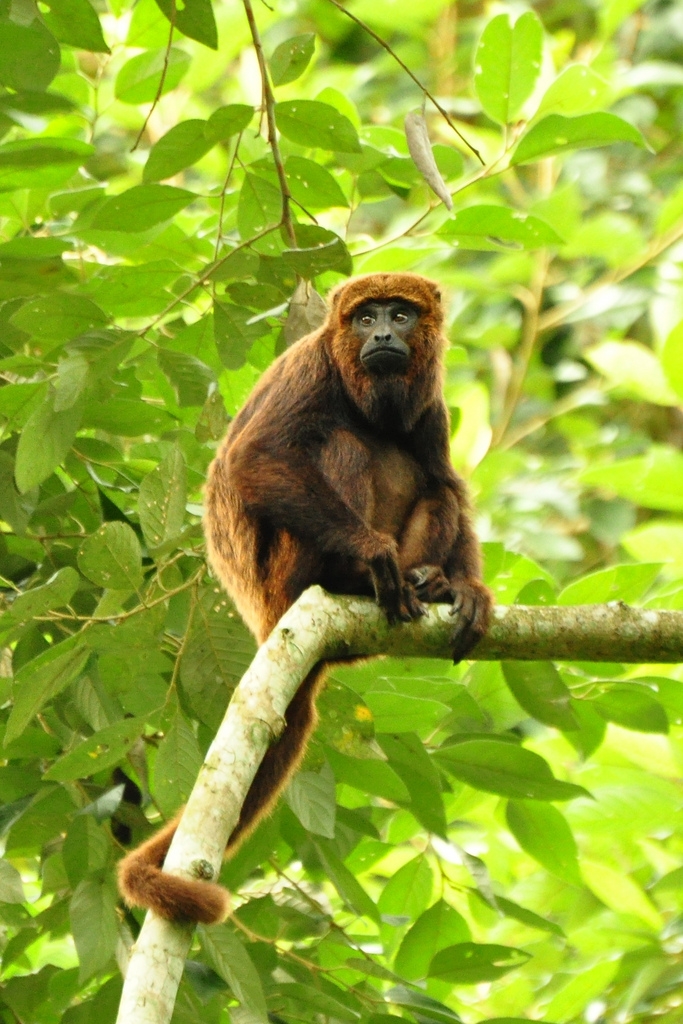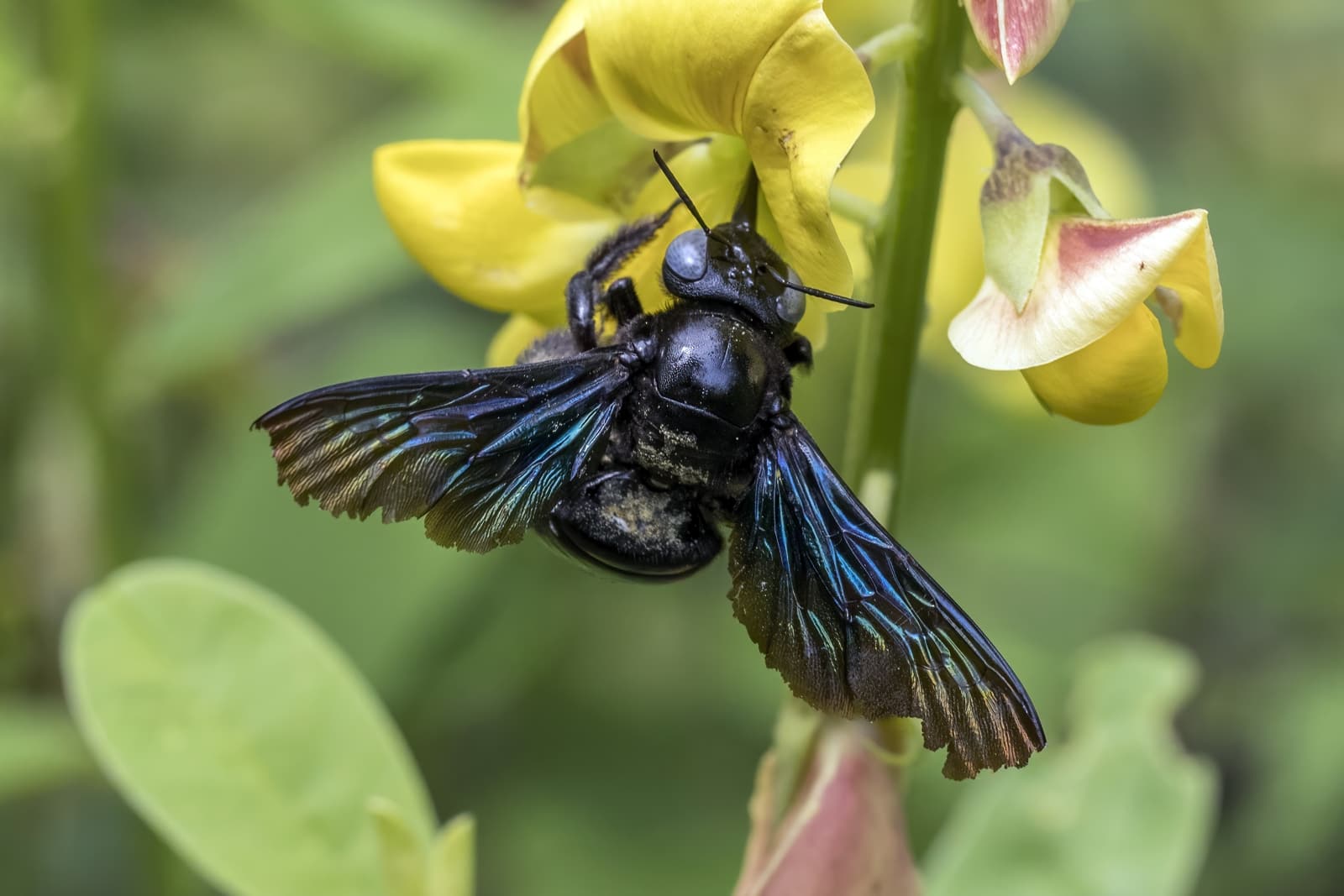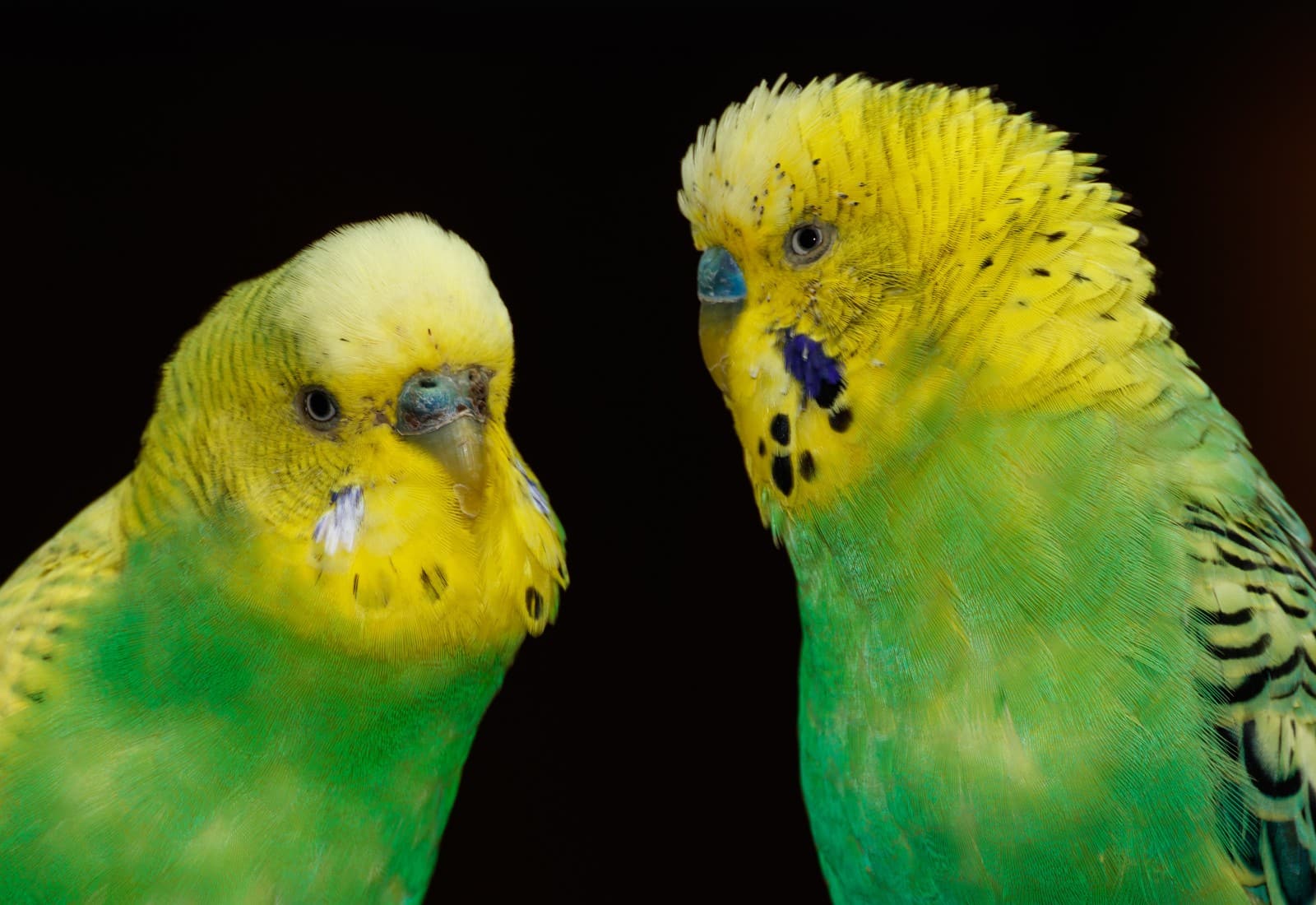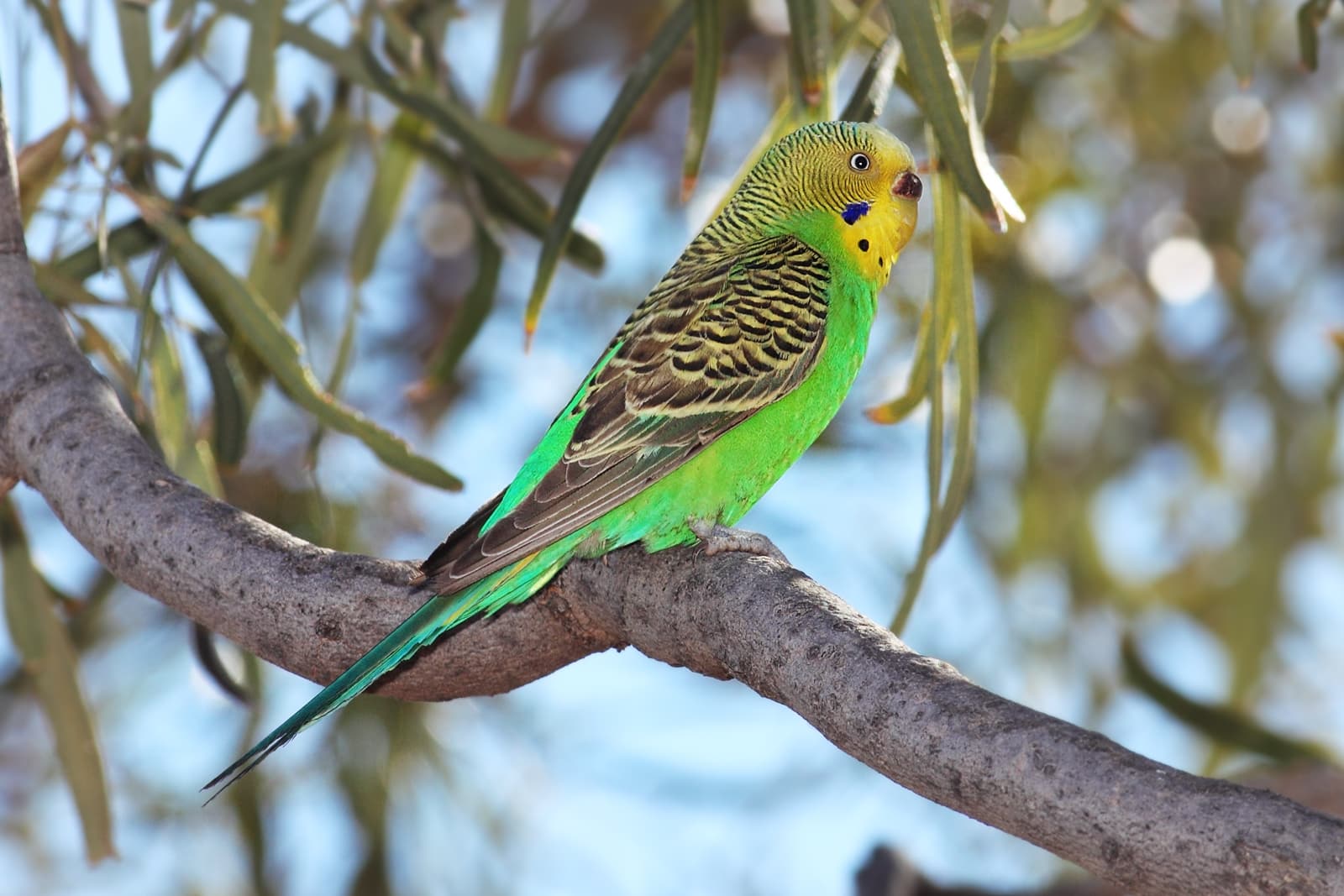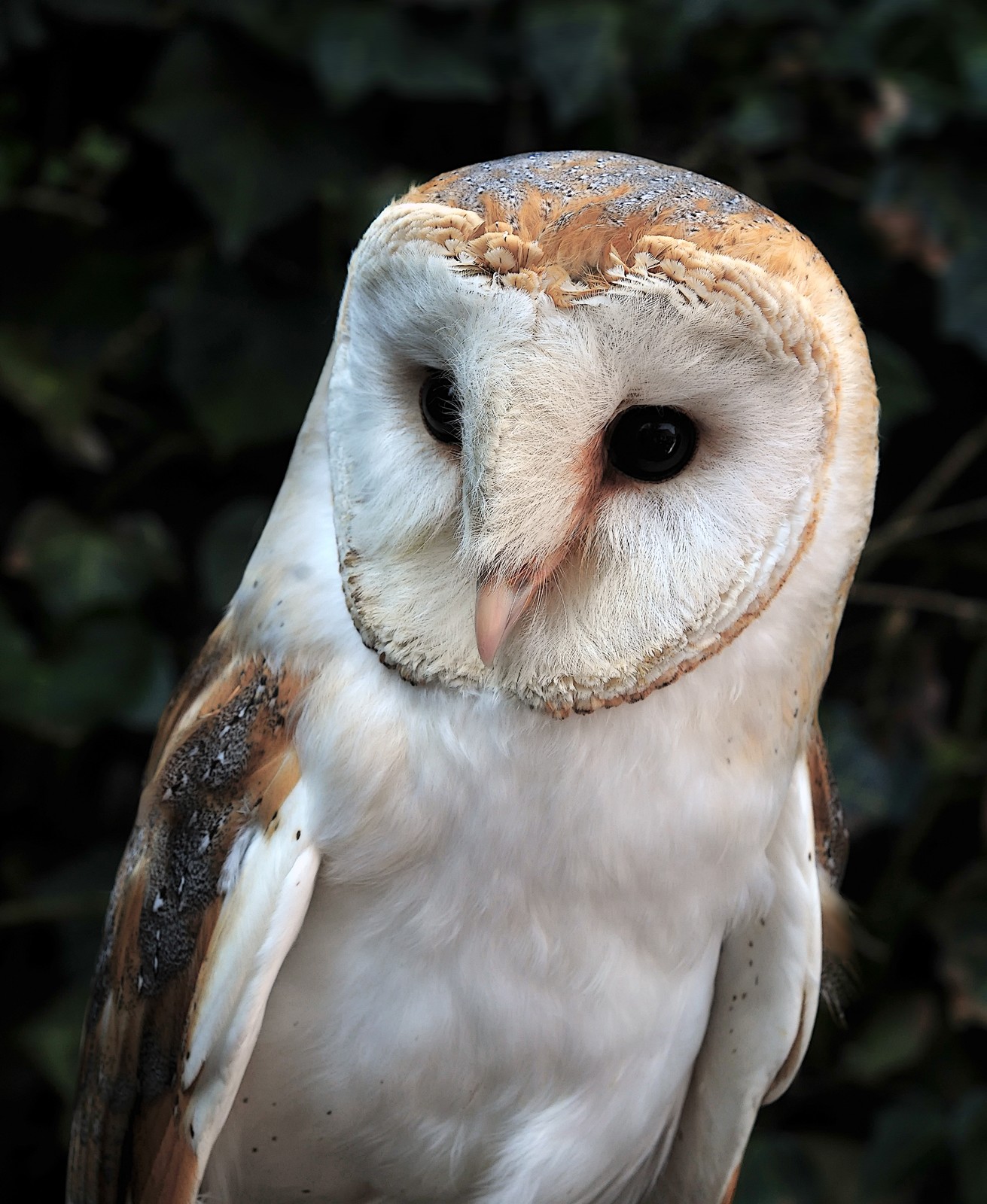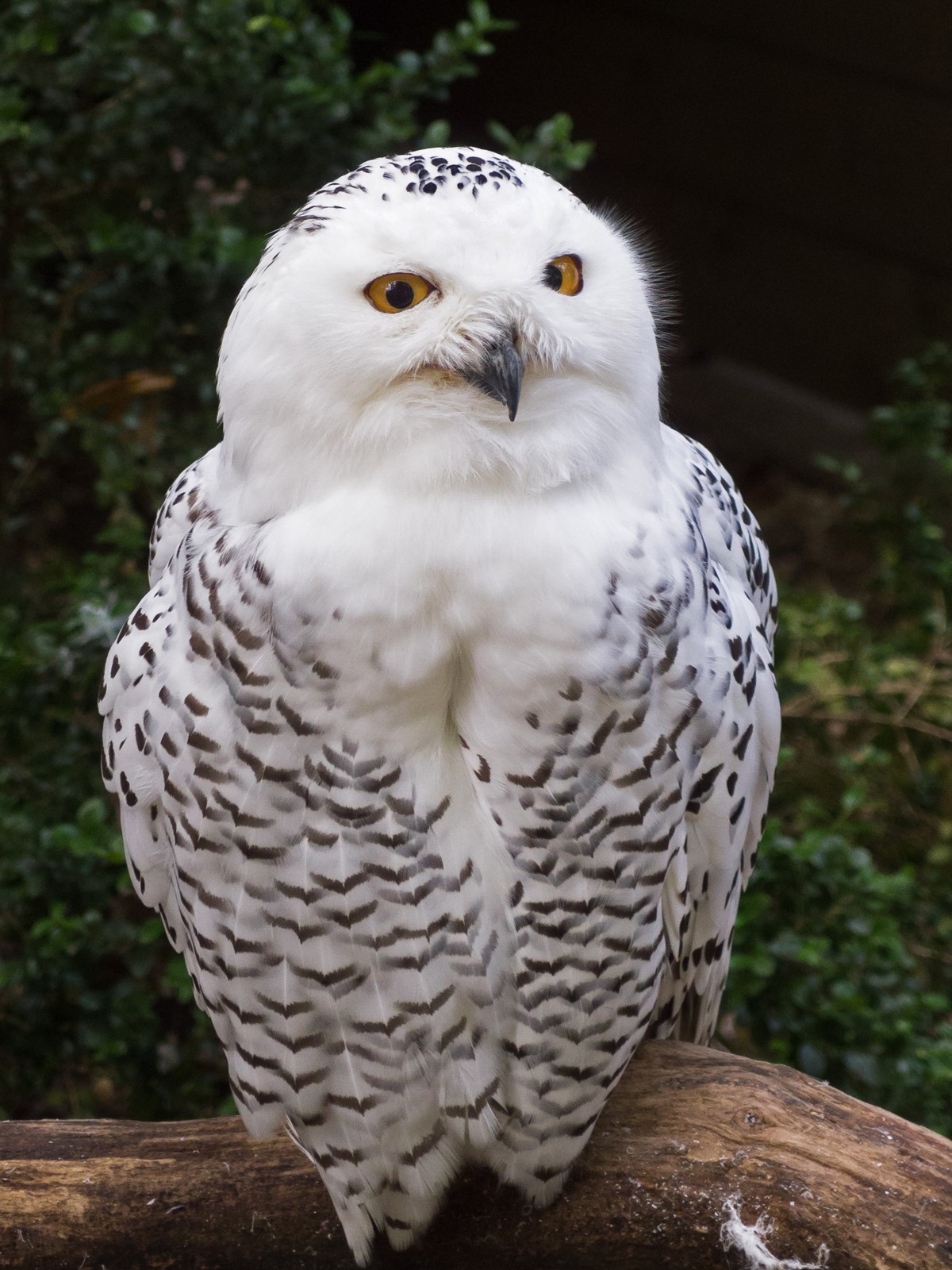Starling vs Grackle: A Complete Comparison
When comparing Starling vs Grackle, size offers the most immediate distinction. Common Grackles measure 11-13 inches (28-33 cm) in length, notably larger than European Starlings at 7-9 inches (18-23 cm). While both birds display iridescent plumage, their coloring and patterns differ significantly, helping observers make accurate identifications in urban and suburban settings.
These two species, despite their superficial similarities, belong to different families – Starlings to Sturnidae and Grackles to Icteridae. This taxonomic difference explains many of their behavioral and physical variations, from feeding habits to social structures.
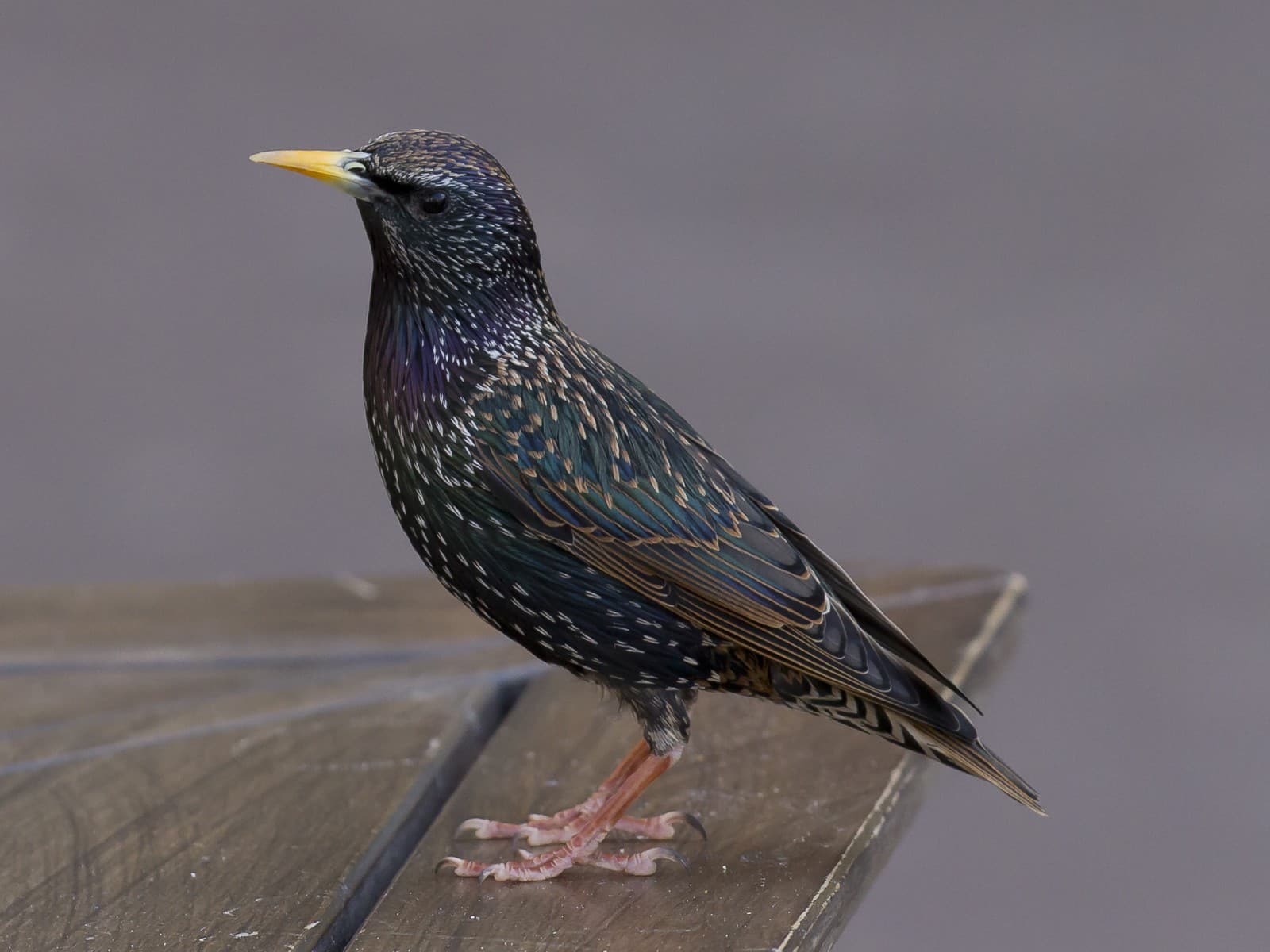
© PierreSelim / CC BY-SA 3.0
The European Starling exhibits distinctive speckled plumage with an iridescent sheen, setting it apart from the larger, more uniformly colored Grackle. Note the characteristic yellow beak and shorter tail length typical of the species.
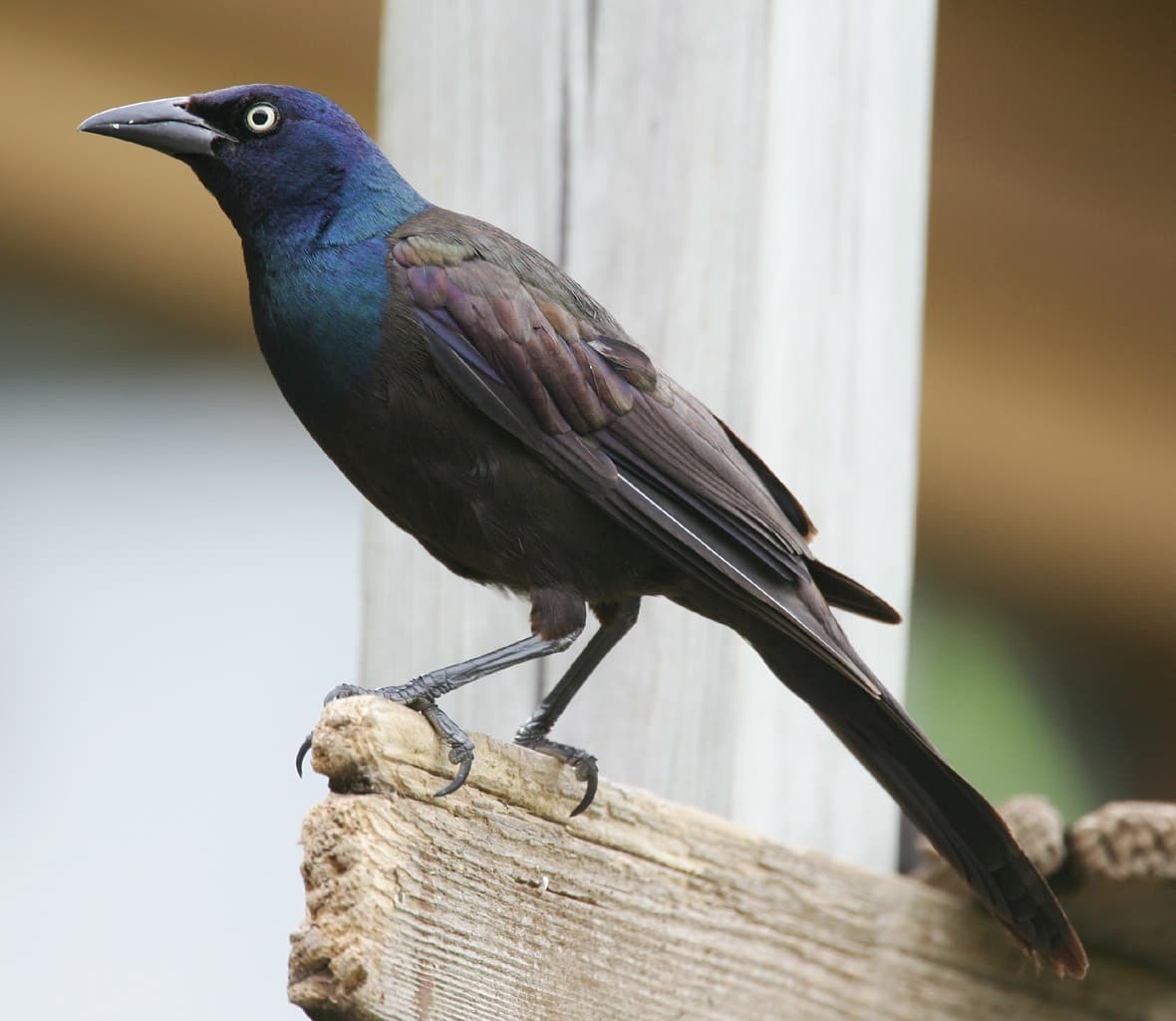
© Mdf / CC BY-SA 3.0
The Common Grackle showcases its distinctive longer profile and keel-shaped tail. The iridescent blue-black head and bronzy body create a striking contrast, while the yellow eye stands out as a key identifying feature.
Key Differences: Starling vs Grackle
| Feature | Starling | Grackle |
|---|---|---|
| Size | 7-9 inches (18-23 cm) | 11-13 inches (28-33 cm) |
| Weight | 2-3.5 oz (60-96 g) | 3.8-5 oz (108-142 g) |
| Plumage | Speckled with iridescent purples and greens | Glossy black with bronze and blue iridescence |
| Beak | Yellow (breeding) or dark (non-breeding) | Dark, longer than starling’s |
| Tail | Short and squared | Long and keeled |
| Eye Color | Dark | Pale yellow (adults) |
Habitat and Distribution
Starlings and Grackles both thrive in urban environments, but their native ranges differ significantly. European Starlings, introduced to North America in the 1890s, now occupy most of the continent. Common Grackles are native to North America, primarily east of the Rocky Mountains.
Behavior and Social Structure
While both species form large flocks, their social behaviors show distinct patterns. Starlings create massive murmurations containing thousands of birds, executing synchronized aerial displays. Grackles form smaller colonies, typically gathering in groups of dozens to hundreds, particularly during breeding season.
Diet and Feeding Habits
These birds display different feeding strategies:
- Starlings primarily probe the ground with their beaks, using a unique “gaping” technique
- Grackles employ more varied feeding methods, including foraging in shallow water
- Both species are opportunistic but Grackles show more predatory behavior, occasionally taking small birds and rodents
Who Would Win in a Confrontation?
In direct confrontations, Grackles typically dominate due to their larger size and more aggressive nature. They measure approximately 40% larger than Starlings and possess stronger beaks. However, Starlings often compensate through overwhelming numbers and coordinated group behavior.
Conservation Status and Population Trends
Both species maintain stable populations, though their impact on native species differs:
- Starlings: Listed as invasive in North America, with population estimates exceeding 200 million
- Grackles: Native species with populations showing slight decline in recent decades
- Both face urban challenges but demonstrate remarkable adaptability
Identification Tips for Observers
To distinguish between these species, focus on these key features:
- Size difference: Grackles appear notably larger
- Tail shape: Grackle’s long, keeled tail vs Starling’s shorter, squared tail
- Eye color: Grackle’s pale yellow eyes vs Starling’s dark eyes
- Flight pattern: Starlings fly in tight, coordinated groups while Grackles maintain looser formations
Understanding these distinctions helps birders and casual observers accurately identify these common urban birds, enhancing their appreciation for local wildlife diversity.



